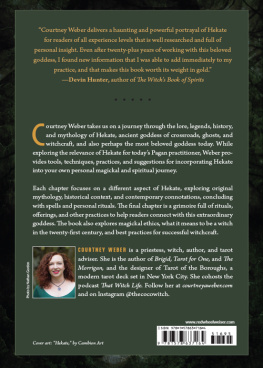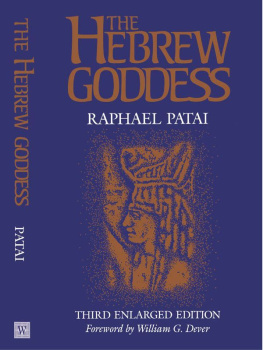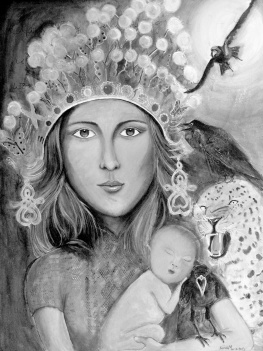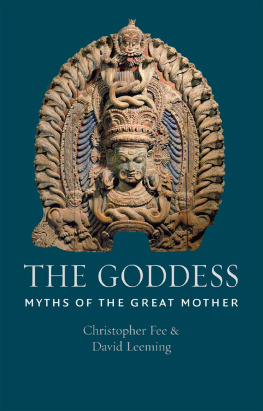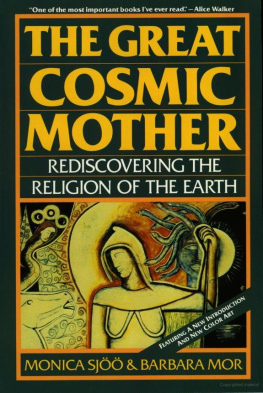Movements are like plants. Some, like annuals, spring up in a season, take over the garden, flourish, and die when winter comes. Others, and the Goddess movement is one of them, grow like perennials. In the first few years, most progress is underground. Only when they have developed strong roots do the plants spring into wild and exuberant growth. Perennials develop slowly, but they have staying power. They spring up anew when winter ends. Their deep roots let them withstand drought. They live long, and reproduce from roots and runners as well as seeds.
The Spiral Dance is a seed planted twenty years ago. Over the last two decades, the Goddess movement has grown from many seeds, like a garden of long-lived flowers and healing herbs. Its a big garden: Ive tended only one corner of it. But twenty years is long enough for perennials to come into full blossom and for fruit trees to mature. We can look back now and see the results of our planting, weeding, and tending.
In 1979, I ended the book with a chapter called Creating Religion: Toward the Future. One of the disconcerting things about life is that the future has a way of catching up with you. I wrote the book on an electric typewriter when White-Out was the leading-edge word-processing technology. I wrote the ten-year notes on an early model home computer with a minuscule screen and no hard drive, and Im writing these notes on a Mac laptop that, at five years old, is already outdated. My source of power is the solar panels on my roof, and when I take a break from working Ill be checking into an online meeting of Witchcraft teachers and organizers from across the United States, Canada, and Europe, or possibly updating my Web page. The future is already here.
Besides technological changes, political changes have reshaped the world in the last two decades. This book was conceived during the Carter era. Since then, weve seen Reagan and Bush come and go, the waxing and waning of the revolutionary movements in Central America, the fall of the Soviet Union, the end of apartheid, and the impeachment of a popular president in a drama so sleazy and bizarre that no one in 1979 could possibly have imagined it.
In approaching this new edition, I wondered if the book would still make sense on the edge of a new millennium, and in the light of both world changes and the tremendous growth of the Goddess movement in the last two decades. Ten years ago, we were still putting down roots, growing steadily but not as visibly. Today we are in that fine flush of perennial growth when the roots reach deep for underground waters and runners begin to multiply and spread.
In 1979, I was in my twenties, and most of my coven sisters and brothers were also young. I was still inventing my own life and figuring out some basic things, like what I wanted to be when I grew up and how to get the dishes done before the supply of clean plates was exhausted. Im amazed at how that person, that mere snip of girl I remember being, knew some of the things in this book and why, if she knew them, she didnt apply them more clearly and consistently in her own life.
Now Im middle-aged. Im wiser, neater, and less judgmental although far more irritable. I dont see or hear as well, although Im probably stronger and in better shape (if thicker around the middle) than I was in my twenties. I already am what Im going to be when I grow up. Now I think about who is going to carry on this work when Im gone, and what I want to be in my next life. In this one, its too late for me to become a surfer, a professional flamenco dancer, a biological mother. These are choices I must now accept. Middle age is a time for coming to peace with decisions and life choices. The garden beds are built, and the perennials have had time to settle in. Either you continue to tend them or you toss it all out and start all over again at a time in life when double digging throws your back out. Time runs differently. This year we planted a grove of olive trees: Ill be in my midfifties by the time they bear fruit, and an old woman when they reach full maturity. Recently a friend I thought of as a contemporary informed me that she was raised on the Spiral Dance. Not long after, a young woman inquiring about a class asked a friend of mine if she was familiar with the work of a woman named Starhawk. Oh yes, I know her well, my friend replied. I work with her closely. Ohis she still alive? the caller asked.
I am still alive, and hope to remain so for a good long while yet. So is this book. Im gratified that I still want to work in this garden. The soil is still rich, and the structure, the theology, the ethics, the politics, and the magical training and exercises are sound.
The insights in this book form the basic framework of understanding that has supported me throughout my adult life. The perennials that took root twenty years ago still nourish me. I know more about magic, ritual, energy, and groups than I did then. But the more I know, the simpler magic becomes. I still use and teach the exercises given here, and when Ive changed them it is not because theyre ineffective but because I felt a personal need to do something new.
There are aspects of this book I wish were irrelevant. A major thrust of this work is its challenge to the spiritual supremacy of patriarchal males and male images. I would have hoped those issues would be outdated by now, but they are not. Id like to think the introduction to the fiftieth anniversary edition might read:
This classic work of the past millennium brings us back to a time when religious teachers, leaders, and deities were nearly all men. How hard it is to conceive of that era now, when women abound in the highest decision-making bodies of every major religion, when rape, incest, and domestic violence have become as rare and unthinkable as cannibalism, when religious language is so universally gender-inclusive, when children learn Solstice chants along with Christmas carols, Hanukkah songs, and Kwanza prayers, and new Goddess traditions spring up annually .





